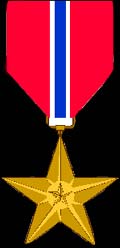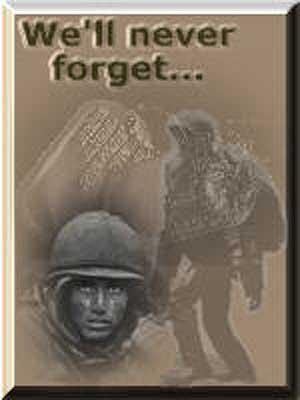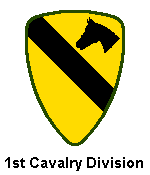ARTICLE FROM EUFAULA, OKLAHOMA NEWSPAPER.
A NEWSPAPER CLIP ABOUT MY DAD PLATOON SARGEANT PENDERGRAfT.
"Once, when his company and another unit of the Fifth
Cavalry regiment were battling for ground against North
Koreans, 27-year-old Pendergraft's platoon was pinned down
by heavy enemy fire serveral hours. Three days straight
his unit with drew and re-attacked enemy-held mountainsides.
On the final day of operation against the Red force,
Pendergraft let his men up the hillsides in walking fire,
oblivous to heavy enemy artillery fire and grenades dropped
around the group. For this action Sergeant Pendergraft was
awarded the Bronze Star Medal. "After three days of
fighting," Sergeant Pendergraft said, "I thought the best
thing to do was bluff the enemy troops. This walking fire
tactic worked and the mountainside was secured late in the
afternoon." When United Nations units began their push
north for the second time, Sergeant Pendergraft's regiment
was given a position near Kumyangjang-ni. When his platoon
entered this bomb-smashed village he was directly
responsible for for bringing the unit from a Chinese trap
when he launched a single handed attack against the
entrenched forces. After his platoon had reached the lip
of Hill 312 north of the village, it was temporarily
stopped by atuomatic weapons and small arms fire. Here,
Sergeant Pendergraft moved ahead of his unit and began
flinging grenades at the enemy gun positions. The Red
troop released a volley of machine gun fire toward the
platoon sergeant while other Red infantrymen heaved
grenades toward his men. After destroying the two of the
Communist entrenchments, an enemy grenade exploded at his
feet. Members of his unit said he rolled some 50 feet
downhill from the blast. Sergeant Pendergraft pulled
himself up by a tree and gave the order for his men to begin
their advance again. The Hill was taken. "That was
probably the tightest spot I've been caught in during the
war, but that was the only way to destroy the gun nests
without sacrificing the lives of men in the platoon," he
concluded. More that 200 enemy soldiers were kIlled on
this particular hill and a jeepload of Red equipment picked
up for study."

1.
Description: A bronze star 1 inches in circumscribing diameter. In
the center thereof is a 3/16-inch diameter superimposed bronze star,
the center line of all rays of both stars coinciding. The reverse
has the inscription "HEROIC OR MERITORIOUS ACHIEVEMENT" and a space
for the name of the recipient to be engraved. The star is suspended
from the ribbon by a rectangular shaped metal loop with the corners
rounded.
2. Ribbon: The ribbon is 1 3/8 inches wide and consists of the following
stripes: 1/32 inch white 67101; 9/16 inch scarlet 67111; 1/32 inch
white; center stripe 1/8 inch ultramarine blue 67118; 1/32 inch white;
9/16 inch scarlet; and 1/32 inch white.
3. Criteria: a. The Bronze Star Medal is awarded to any person who,
while serving in any capacity in or with the military of the United
States after 6 December 1941, distinguished himself or herself by
heroic or meritorious achievement or service, not involving participation
in aerial flight, while engaged in an action against an enemy of the
United States; while engaged in military operations involving conflict
with an opposing foreign force; or while serving with friendly foreign
forces engaged in an armed conflict against an opposing armed force
in which the United States is not a belligerent party.
b. Awards may be made for acts of heroism, performed under circumstances
described above, which are of lesser degree than required for the
award of the Silver Star.
c. Awards may be made to recognize single acts of merit or meritorious
service. The required achievement or service while of lesser degree
than that required for the award of the Legion of Merit must nevertheless
have been meritorious and accomplished with distinction.
4. Components: The following are authorized components of the Bronze
Star Medal:
a. Decoration (regular size): MIL-D-3943/22. NSN for decoration set
is 8455-00-269-5749. NSN for replacement medal is 8455-00-246-3829.
b. Decoration (miniature size): MIL-D-3943/22. NSN 8455-00-996-5004.
c. Ribbon: MIL-R-11589/18. NSN 8455-00-252-9915.
d. Lapel Button: MIL-R-11484/16. NSN 8455-00-265-4889.
5. Background: a. General George C. Marshall, in a memorandum to President
Roosevelt dated February 3, 1944, wrote: "The fact that the ground
troops, Infantry in particular, lead miserable lives of extreme discomfort
and are the ones who must close in personal combat with the enemy,
makes the maintenance of their morale of great importance. The award
of the Air Medal have had an adverse reaction on the ground troops,
particularly the Infantry Riflemen who are now suffering the heaviest
losses, air or ground, in the Army, and enduring the greatest hardships."
The Air Medal had been adopted two years earlier to raise airmens
morale.
b. President Roosevelt authorized the Bronze Star Medal by Executive
Order 9419 dated 4 February 1944, retroactive to 7 December 1941.
This authorization was announced in War Department Bulletin No. 3,
dated 10 February 1944. The Executive Order was amended by President
Kennedy, per Executive Order 11046 dated 24 August 1962, to expand
the authorization to include those serving with friendly forces.
c. As a result of a study conducted in 1947, the policy was implemented
that authorized the retroactive award of the Bronze Star Medal to
soldiers who had received the Combat Infantryman Badge or the Combat
Medical Badge during World War II. The basis for doing this was that
the badges were awarded only to soldiers who had borne the hardships
which resulted in General Marshalls support of the Bronze Star Medal.
Both badges required a recommendation by the commander and a citation
in orders.
d. Order of precedence and wear of decorations is contained in Army
Regulation 670-1. Policy for awards, approving authority, supply,
and issue of decorations is contained in AR 600-8-22.
WEAPONS USED IN KOREAN WAR:



![]()





